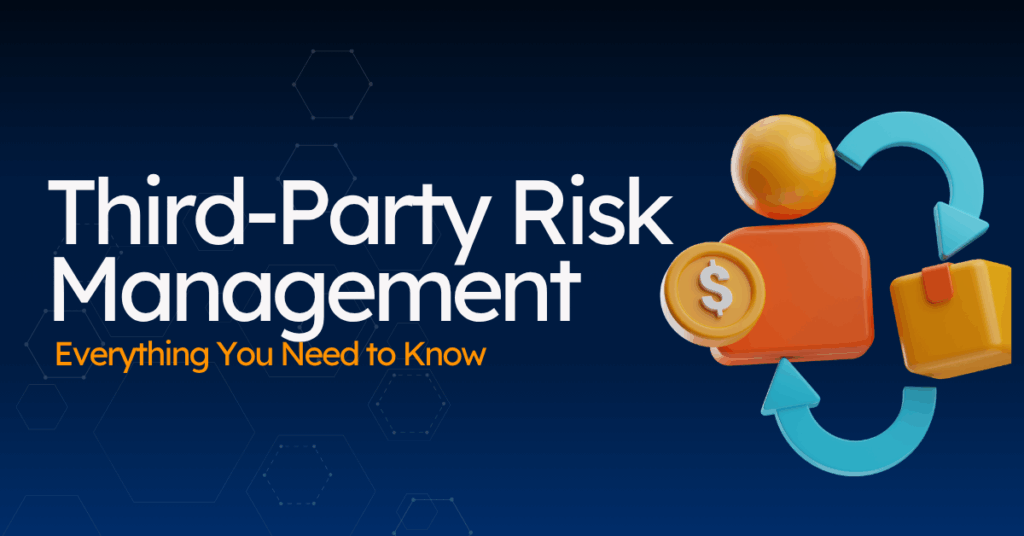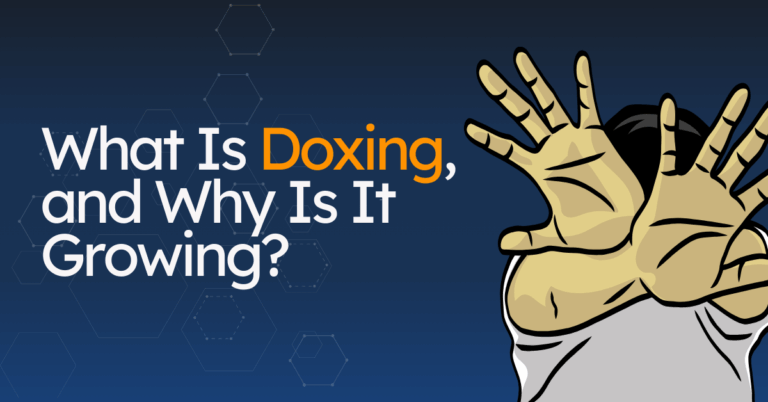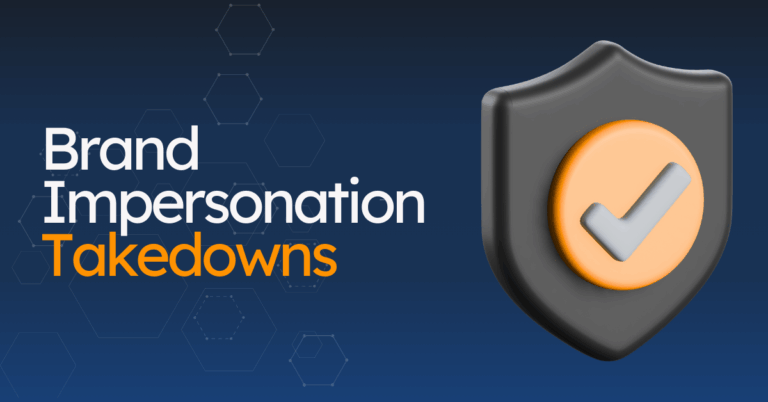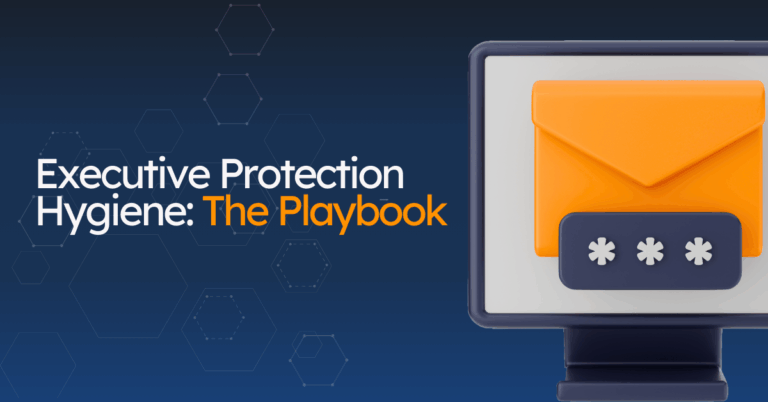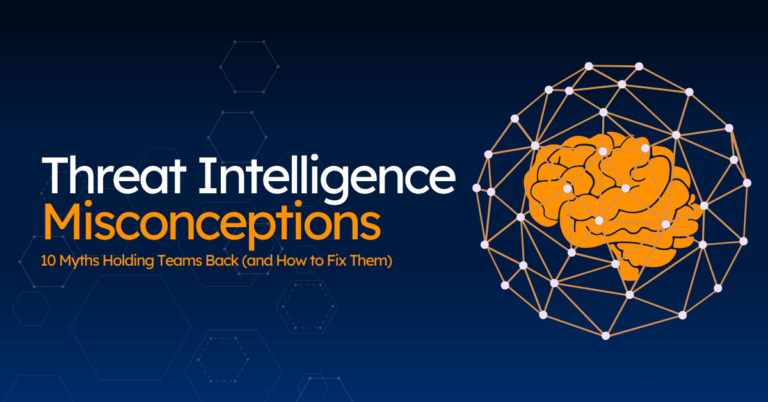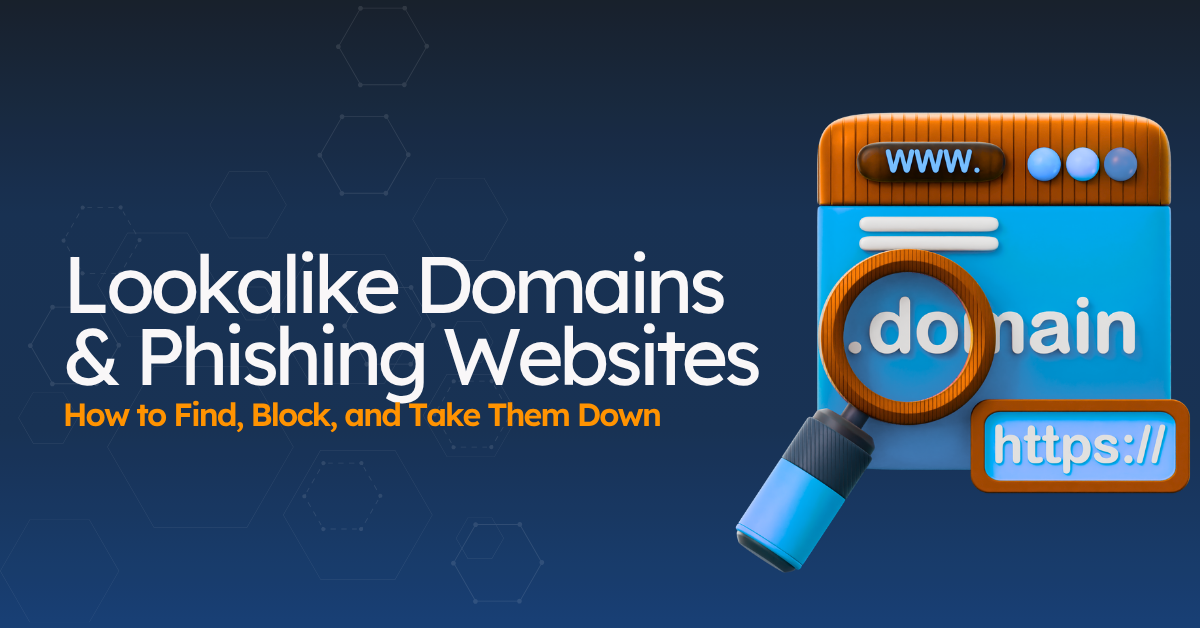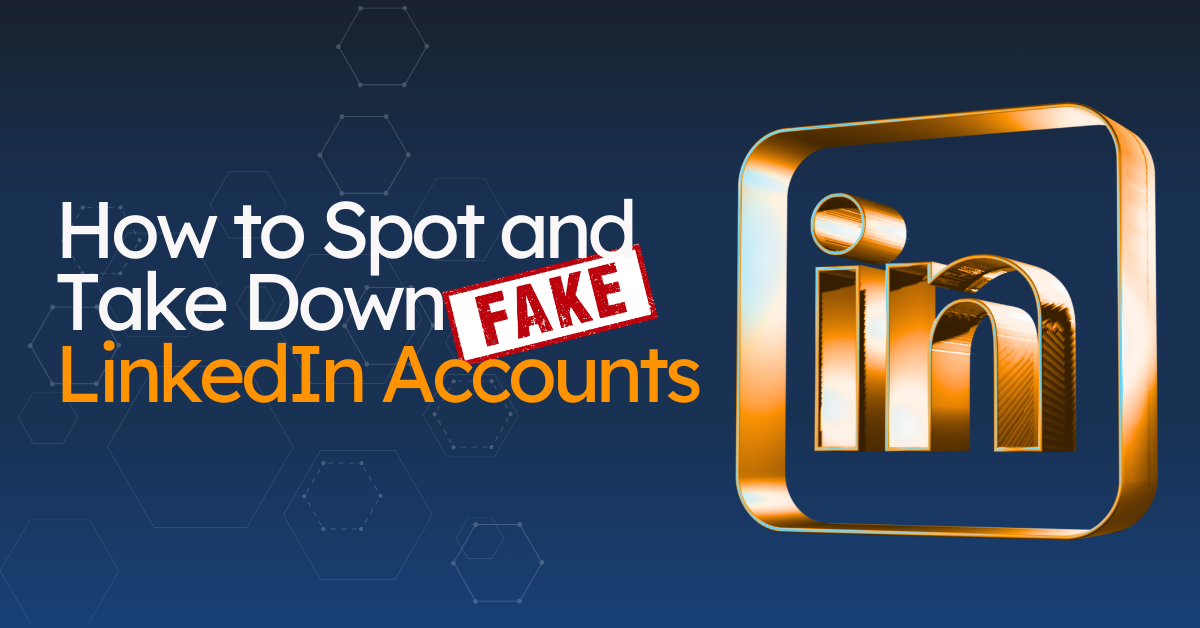Third-party risk management has never been optional — but today, the stakes are higher than ever. Your business runs on vendors, platforms, and digital partners — and every one of them expands your attack surface. What used to be a procurement checkbox is now a real threat to your security, compliance, and brand.
This article breaks down everything you need to know:
- Why traditional vendor assessments aren’t enough.
- How continuous monitoring changes the game.
- The full TPRM lifecycle, from onboarding to offboarding.
- What to look for in a TPRM solution.
- How to know if your current approach is working.
No matter where you are today, this article will help you run a sharper, stronger TPRM program.
Let’s begin.
What Is Third-Party Risk Management (TPRM)?
Third-Party Risk Management (TPRM) is the process of identifying, assessing, and reducing the risks that come from the external companies your business depends on — vendors, suppliers, contractors, partners, service providers, and anyone else who touches your systems, data, or reputation.
If they can access your infrastructure, hold your customer data, represent your brand, or impact your operations — they’re in scope.
That’s the core idea of TPRM: the risk doesn’t stop at your organization. It follows the connections — your ecosystem.
Why TPRM Matters in a Risk Strategy
Third-party risk used to be a checkbox. Today, it’s a board-level issue.
Modern businesses don’t operate alone, and breaches don’t just come through your front door anymore — they slip in through the side, buried in vendor code, cloud platforms, or shared access.
What makes it even more critical? The digital landscape has changed. Businesses now run on APIs, cloud tools, and partner ecosystems. That’s a bigger attack surface. More connections. Less control.
And… regulators are watching. Frameworks like GDPR, HIPAA, and DORA now hold companies responsible for third-party failures — even when the breach isn’t yours.
When an outside party that you rely on for your business has an exposure, your customers don’t blame them. They blame you.
So TPRM isn’t just a procurement issue. It’s:
- Cyber risk: Third parties get breached, and your data gets exposed.
- Compliance risk: A vendor misses a control, and you’re the one facing regulators.
- Reputational risk: A partner makes headlines, and your brand takes a hit.
- Operational risk: A supplier fails, and your business grinds to a halt.
TPRM connects directly with security, compliance, legal, and even brand. It gives teams a way to spot weak links early, reduce noise, and act before risk turns into damage.

TPRM vs Vendor Risk vs Supply Chain Risk
These terms get thrown around like they’re interchangeable.
This is how we define them.
- Vendor Risk Management usually focuses narrowly on vendors — companies you pay for services. It’s often procurement-led and sometimes treated as a checkbox process.
- Supply Chain Risk looks at the flow of goods, materials, or services needed to produce something — think manufacturing, logistics, and raw materials. It’s more about operational continuity.
- Third-Party Risk Management is the broadest view. It covers every external entity you rely on, regardless of the relationship type — software vendors, partners, service providers, contractors, even fourth parties (your vendors’ vendors). It’s continuous, cross-functional, and business-critical.
In short: TPRM is the big picture. It’s how modern companies stay in control of who they trust — and what’s at stake if that trust breaks.
The Third-Party Risk Management Lifecycle
Third-party risk isn’t something you “do once” and forget. It’s a full lifecycle — one that starts before a vendor signs a contract and keeps going long after they leave.
Here’s what that looks like:
1. Identification
It starts with visibility. Build a full inventory of every vendor, supplier, and partner your teams rely on — across departments and geographies.
2. Evaluation & Selection
Before signing, screen new vendors for risk. Look at things like security posture, business continuity, breach history, and reputation. Learn more about third-party risk protection here.
3. Risk Assessment
Dig deeper. Use tailored questionnaires, digital risk scores, and compliance checks to understand where each vendor stands — and how much risk they bring. Dynamic scoring can factor in cyber posture, brand exposure, industry risk, and impersonation patterns.
4. Risk Mitigation
Not every risk means rejection. Add controls, contract clauses, and service-level agreements (SLAs) to close the gap before things go live.
5. Contract Negotiation & Onboarding
Close the loop with clear terms: security controls, SLAs, breach notice timelines. Then onboard with care — set up access, confirm protections, and document everything before go-live.
6. Ongoing Monitoring
Vendors create risk beyond day one. Track their breach exposure, leaked credentials, and impersonations — wherever they surface. Check out our tool here to have an idea of how to do it.
By the way, we’ll dig deeper into vendor monitoring — what to watch, why it matters, and how to do it right — in the next section.
7. Reporting & Recordkeeping
Track everything. Dashboards and documentation help you meet regulatory requirements, answer audits, and show progress to stakeholders.
8. Vendor Offboarding
When a relationship ends, risk doesn’t. Ensure secure deprovisioning, revoke access, and maintain audit trails that prove you did it right.
Done right, the lifecycle isn’t slow — it’s streamlined. And it gives you the control you need to grow safely.
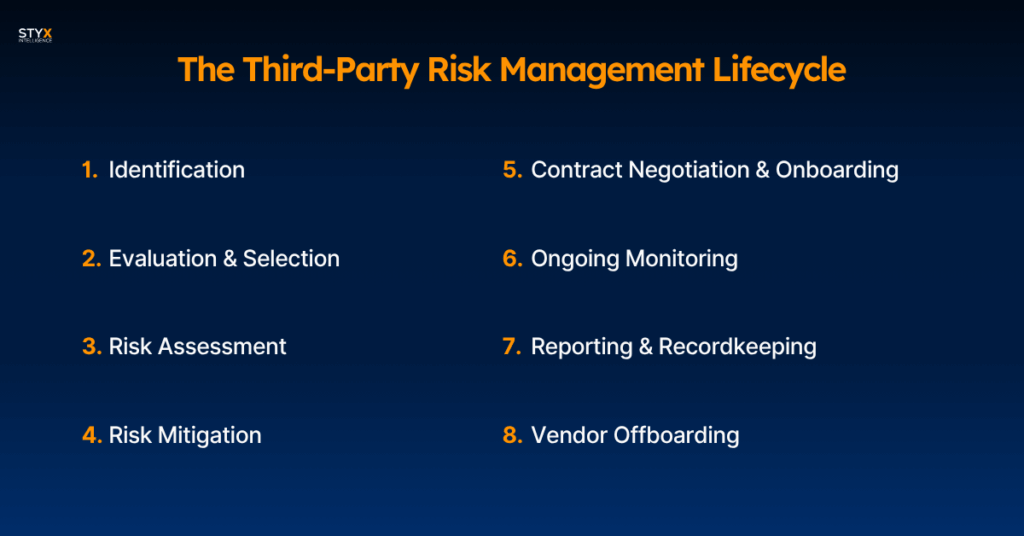
Why One-Time Vendor Assessments Don’t Cut It Anymore
Before onboarding, most organizations do the basics:
- Check what data the vendor touches.
- How critical they are.
- Whether they’ve had breaches, and,
- If they meet compliance standards.
That’s still necessary — but it’s not enough.
Risk isn’t static. Vendors change. Their tools shift. Their posture degrades. And if you’re only looking once a year (or once ever), you’re missing 90% of the picture.
That’s where continuous monitoring steps in.
It’s the real-time layer that keeps vendor evaluation alive — watching how they behave, how exposed they are, and what threats may be building quietly behind the scenes.
What continuous monitoring can show you:
- Breach alerts and leaked data tied to your vendors (data leakage monitoring).
- Expired certificates and misconfiguration (attack surface management).
- Sudden spikes in brand misuse or social media impersonations (brand protection and social media monitoring).
- Executive targeting linked to your supply chain (executive monitoring).
- Mentions on dark web or breach forums (dark web monitoring).
This isn’t noise — it’s the context that tells you when to act, when to escalate, and when a vendor’s risk has changed enough to matter.
With monitoring in place, vendor risk management becomes active — not reactive. You get ahead of problems, not just reports.
Most Common Third-Party Risks (and What They Really Mean)
Not all third-party risk is created equal. Here’s what shows up most — and why each one matters.
1. Cybersecurity Risk
Third parties get breached, phished, or impersonated — and your systems, data, or users pay the price. This is the most visible risk, but rarely the only one.
2. Operational Risk
When a key vendor goes down, so do you. Think outages, service disruptions, or anything that grinds your processes to a halt.
3. Compliance Risk
If a vendor violates GDPR, HIPAA, or other regulations, you’re the one explaining it to auditors. You can outsource work — not accountability.
4. Reputational Risk
Customers don’t separate your brand from your partners. If a vendor leaks sensitive info or behaves unethically, your name’s still in the story. Learn more about the importance of brand protection here.
5. Strategic & Geopolitical Risk
Some vendors carry location-based risk: unstable regions, changing sanctions, or political pressure. What’s fine today might be banned tomorrow.
6. Privacy & Data Protection Risk
If a vendor mishandles personal data, you’re on the hook — legally and reputationally. This risk cuts across industries and teams.
7. Fourth-Party Risk
Your vendors have vendors. If you don’t know who they are, you don’t know your full exposure. Fourth-party risk adds complexity — and surprises.

These risks aren’t hypothetical. They’re playing out every day.
Knowing the types helps you prioritize what matters most — and where to focus first.
TPRM Best Practices for Proactive Organizations
Third-party risk management is much more than keeping up with threats — it’s a core part of digital risk protection. Done right, it builds a smarter, faster, more connected program that fits how your business actually runs.
1. Start with clear goals and ownership
TPRM should align with your broader risk strategy. Define what you need to protect — data, systems, uptime, trust — and make sure security, legal, procurement, and compliance are all at the table.
2. Build and maintain a real vendor inventory
Know who your third parties are, what they access, and how critical they are to your business. Keep the list updated and tier vendors by risk — not just spend.
3. Automate what slows you down
Use tools that streamline onboarding, send security questionnaires, assign follow-ups, and auto-generate reports. You can’t scale a manual process.
4. Assess early, not late
Bake security reviews into procurement. Don’t wait until the contract’s signed to find red flags.
5. Go beyond cyber risk
Third-party risk isn’t just about breaches. It includes compliance gaps, operational failures, unethical behaviour, geopolitical pressure, and more. Know the full range.
6. Monitor vendors continuously
Don’t rely on old questionnaires. Track exposure in real time — including breaches, impersonations, and leaked data. (Learn more here.)
7. Connect risks to real business outcomes
A vendor’s risk score means more when it’s tied to what they impact: customer trust, system availability, or legal exposure. Always prioritize and act on the risks that matter most.
8. Break down silos
As you know, risk isn’t just security’s job. Make sure procurement, legal, and ops teams share visibility, tools, and priorities.
A great TPRM program gives you speed, clarity, and leverage.
Real-World Use Cases by Industry
Third-party risk shows up differently across industries — but the impact is always real. Here’s how TPRM helps teams spot issues early and act fast.
1. Financial Services
A fintech partner suffers a breach, exposing client data. Without monitoring in place, it takes days to find out. With TPRM, alerts fire within hours, and customer protection steps start immediately.
2. Healthcare
A vendor handling patient records fails a HIPAA compliance check. TPRM tools flag the gap before regulators do — and before sensitive data is compromised.
3. Retail
A payment processor is linked to a fraud scheme. TPRM reveals the connection, helping the team block transactions and start incident response before chargebacks pile up.
4. Public Sector
A contractor is impersonated in phishing emails targeting internal staff. TPRM surfaces the spoofed domain and enables quick takedown before access is gained.
5. Manufacturing
A supplier based in a politically unstable region becomes high-risk overnight. TPRM detects the change — including export control issues and potential IP exposure — and triggers a review before operations are impacted.
All these are everyday examples of why vendor visibility matters — and what’s at stake when you don’t have it.
What to Look for in a TPRM Solution
Here are some tips for choosing a third-party risk solution — whichever one you go with (but yeah… we’d go with Styx too).
Look for tools that do more than check boxes. You want something that gives you real visibility and control, saves your team time, and helps you act fast when it matters.
Here’s what matters most:
- Digital risk scoring: Real-time, dynamic, and transparent. Not just a number — a signal you can act on. You should be able to review each finding, mark it as resolved or a false positive, and see your score update in real time. No black-box scoring, ever.
- Vendor matrix with prioritization: Organize vendors by risk level, impact, and exposure. Focus your energy where it counts.
- Continuous monitoring across cyber and brand: Breach alerts, impersonation flags, and exposure tracking — not once a year, but all the time.
- Dark web intelligence: See if your vendors (or you) are showing up in breach dumps, leak forums, or credential databases.
- Automation that removes bottlenecks: Let the platform handle questionnaires, follow-ups, and workflows so your team can focus on actual risk.
- Dashboards that drive action: Clear visuals. Real insights. Trends you can show to leadership — without digging through spreadsheets.
Pick a tool that shows you what matters, helps you act fast, and doesn’t slow your team down. That’s it.

The Benefits of a Unified TPRM Platform
Most teams aren’t short on tools — they’re short on clarity. Risk data sits in silos, workflows get duplicated, and nobody sees the full picture.
A unified TPRM platform changes that.
- No more silos: See every vendor, every risk signal, and every update in one view — across teams, departments, and regions.
- Smarter alignment: Tie vendor risk directly to your business priorities: customer data, uptime, brand trust, and compliance.
- Real-world impact tracking: When a vendor gets breached, you’ll know what systems and outcomes are affected — and what to do next.
- Faster execution: Automate tasks that used to take hours — from onboarding to risk reviews to reporting.
- Proof, not just process: Show progress over time, justify security investments, and give leadership real ROI.
This is where Styx stands out — not just connecting the dots, but making them actionable.
Do You Need a TPRM Solution?
If you work with vendors — and they touch your data, your systems, or your customers — then yes, you do. But here’s how to tell for sure.
Ask yourself:
- Can you name every vendor your teams rely on right now?
- Do you know which ones are critical, and what would break if they went down?
- If one of them got breached today, how long would it take you to find out?
- Do you know about their digital exposure and what is happening with them online?
- When was the last time you reviewed their risk — and was it more than just a questionnaire?
If any of those give you pause, that’s your answer.
The problem isn’t that most organizations ignore third-party risk — it’s that they manage it in pieces: spreadsheets, shared drives, siloed tools, outdated reports. That’s not scalable. And it doesn’t help when something goes wrong.
A TPRM solution fixes that. It gives you visibility, keeps assessments fresh, and makes sure your security, legal, and procurement teams aren’t working in the dark.
Because when a vendor causes a breach, your customers don’t ask whose fault it was. They ask why you didn’t see it coming.
Want to learn more about Styx?
Book a demo with our team to see how you can track vendor breach history, impersonations, and digital exposure — and protect your business, reputation, and trust.

